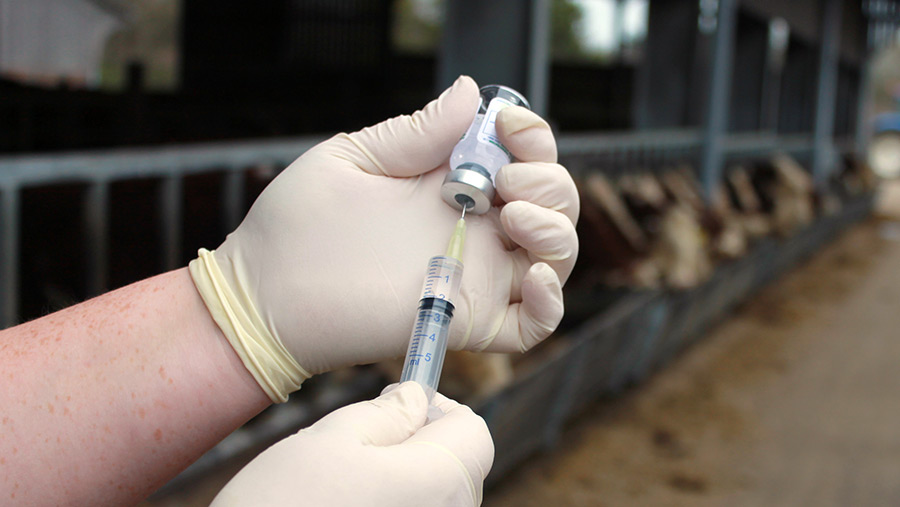4-step guide to reviewing antibiotics use on your farm

For livestock farmers signed up to the Red Tractor Assurance scheme, an annual review of antibiotics use is required to meet assurance criteria.
Vet Tim Potter from the VetPartners group says this process should be seen as an opportunity to focus on improving animal health and reducing antibiotics use, rather than just being a tick-box exercise.
Below, Dr Potter explains the four key stages to carrying out a review, takes a look at how each sector has progressed and what their focuses should be.
1. Identify what antibiotics are being used for
As a starting point, review the total amount of antibiotics bought over a 12-month period to help identify what they have been used for and when.
Once you understand your antibiotics spend, the information can be used to help prioritise which areas of animal health need improving to reduce antibiotics.
See also: How a farmer-led project helps dairies reduce antibiotics use
For example, if 75% of antibiotics spend is for treatment of calf pneumonia, this is a solid indicator that preventing the disease will save money and improve animal health.
An antibiotics review is also a useful opportunity to check and review standard treatment protocols.
For each medication, make sure you clarify the situations when it should be used, the correct dose and how to administer it. Misconceptions are incredibly common, so it’s worth clarifying these questions with your vet.
2. Review relevant data
Other forms of herd or flock health data can be used in conjunction with antibiotics spend to plan how to change management practices.
The types of data worth evaluating vary depending on species and at what point antibiotics are being used.
For example, if the highest proportion of antibiotics spend is during lambing, consider performance data related to lambing. Farmers and vets can go over the trends in numbers born and weaned, to identify when losses arise.
For dairy farms treating mastitis, it will be cell counts and the rates of clinical cases, combined with bacteriology results.
3. Strategy to prevent disease
Once a priority area has been identified, changes can be made to help prevent the occurrence of disease.
This may include tightening biosecurity protocols, considering vaccine use to improve immunity or, in some instances, infrastructure changes.
As an industry, there have been a lot of quick wins in terms of reducing antibiotics use. This means farmers and vets increasingly need to look at systems as a whole.
4. Check the effect of changes on antibiotics use
Antibiotics reviews are not required by law, however, they are part of the Red Tractor Assurance scheme and therefore many livestock farmers do carry out an annual review.
The best time to review progress with a vet will depend on the disease or condition that is being tackled.
If antibiotics are mainly used to treat seasonal issues – for example, at lambing, it is worth reviewing before and after lambing.
On a dairy farm calving year round, there are more likely to be constant challenges, in which case a six-monthly review will be beneficial.
How are antibiotics used today?
Sheep
Historically, there have not been high levels of use of highest-priority critically important antibiotics (HP-CIAs) in sheep.
The areas of focus identified by Responsible Use of Medicines in Animals (Ruma) (PDF) included reducing antibiotics when treating:
- Lameness
- Ewes in late pregnancy to avoid abortion
- Prophylactic treatment of all newborn lambs against neonatal disease
Beef
In beef, the key areas have been to reduce antibiotics use to treat infective lameness, mycoplasma, respiratory disease, calf scour, calf navel ill, calving problems and caesareans.
There has been a shift away from using HP-CIAs in beef over the past few years, although use was never high.
Dairy
In dairy, antibiotics are most commonly used in treating mastitis, infective lameness and reproductive disease.
In terms of HP-CIAs, there has been a shift away from third- and fourth-generation cephalosporins to treat lameness and reproductive infections. These were previously used frequently because they had a short milk withdrawal period.
Fluoroquinolones were being used to treat toxic mastitis; this has dropped as people have focused more on prevention and supportive therapy.
